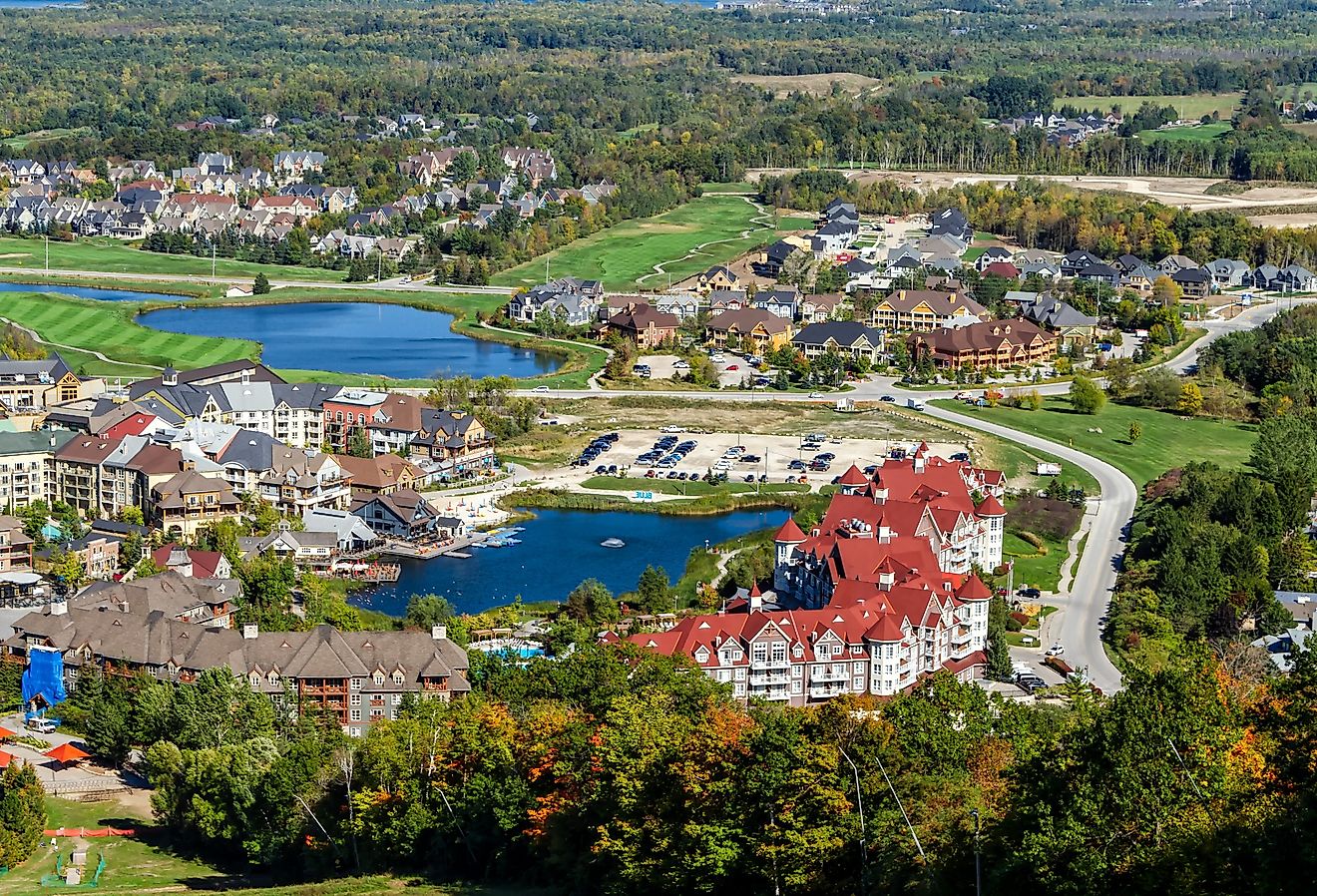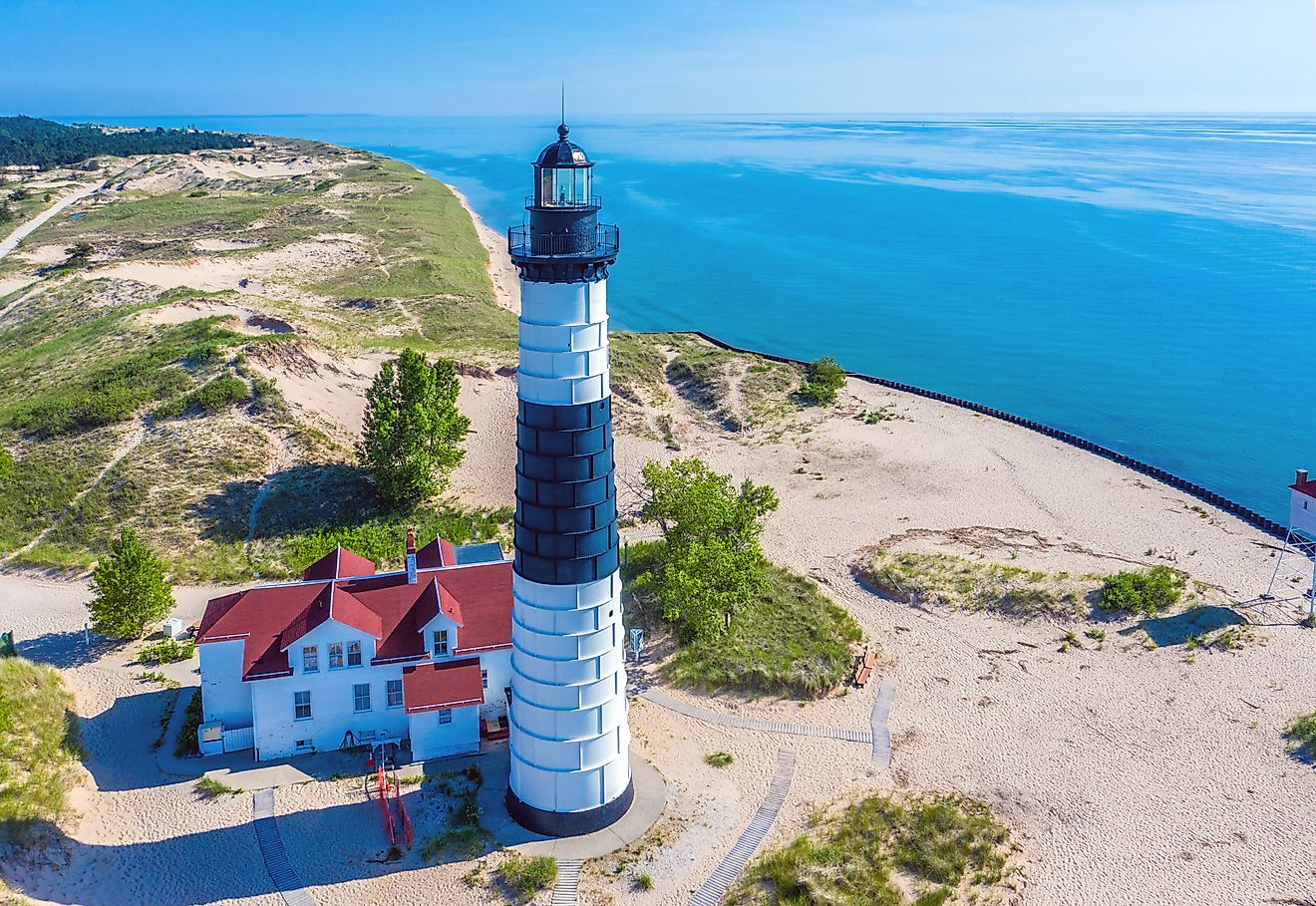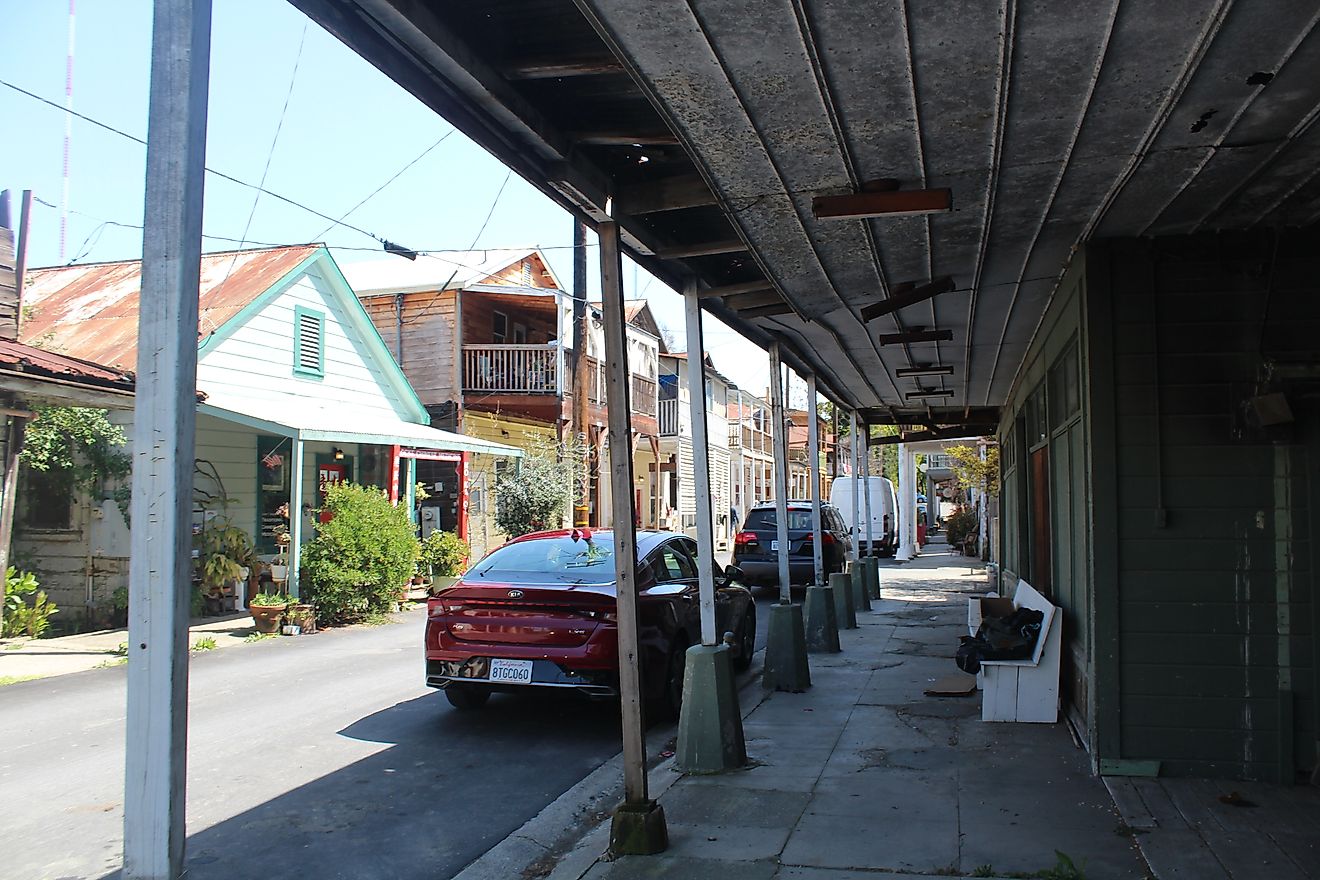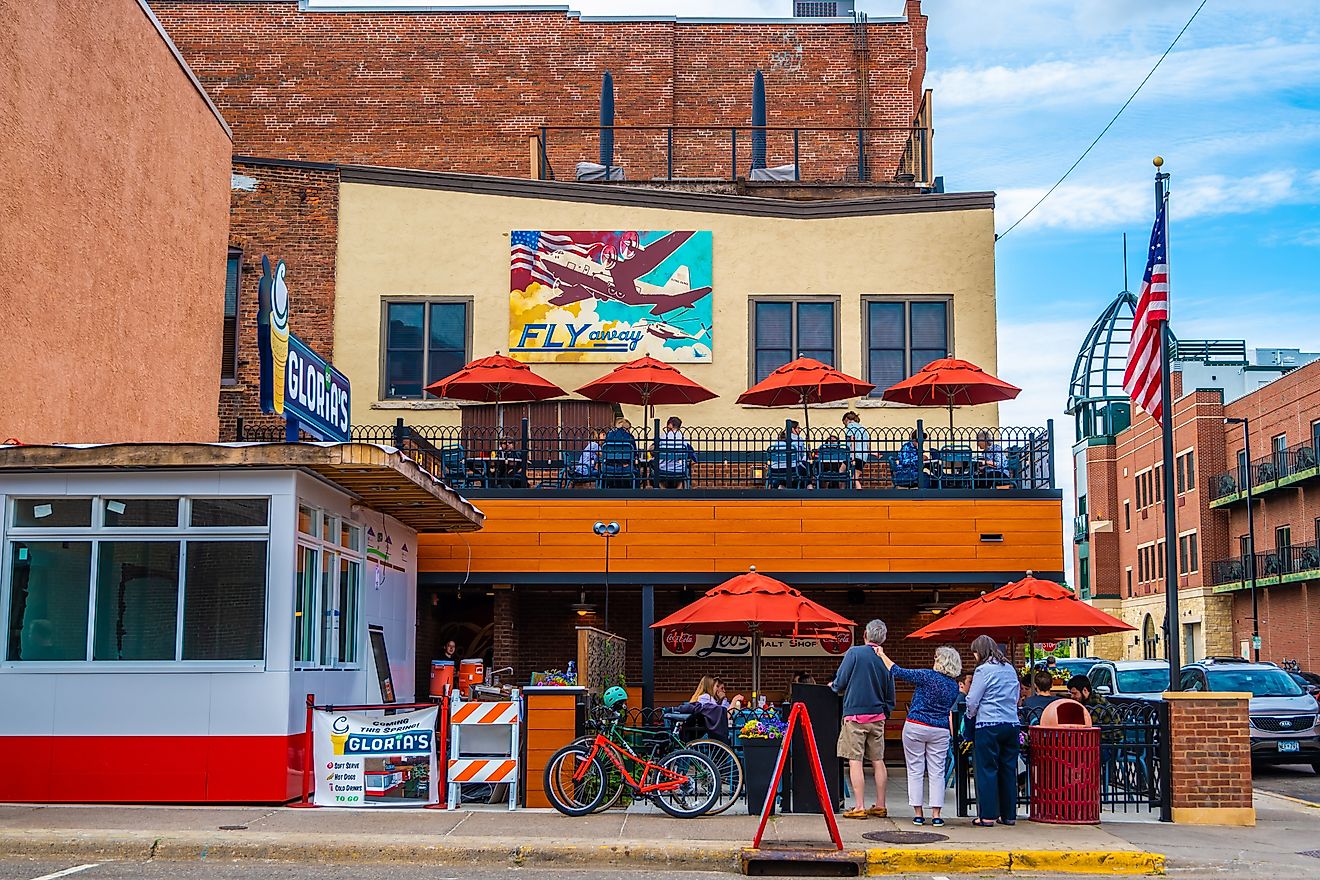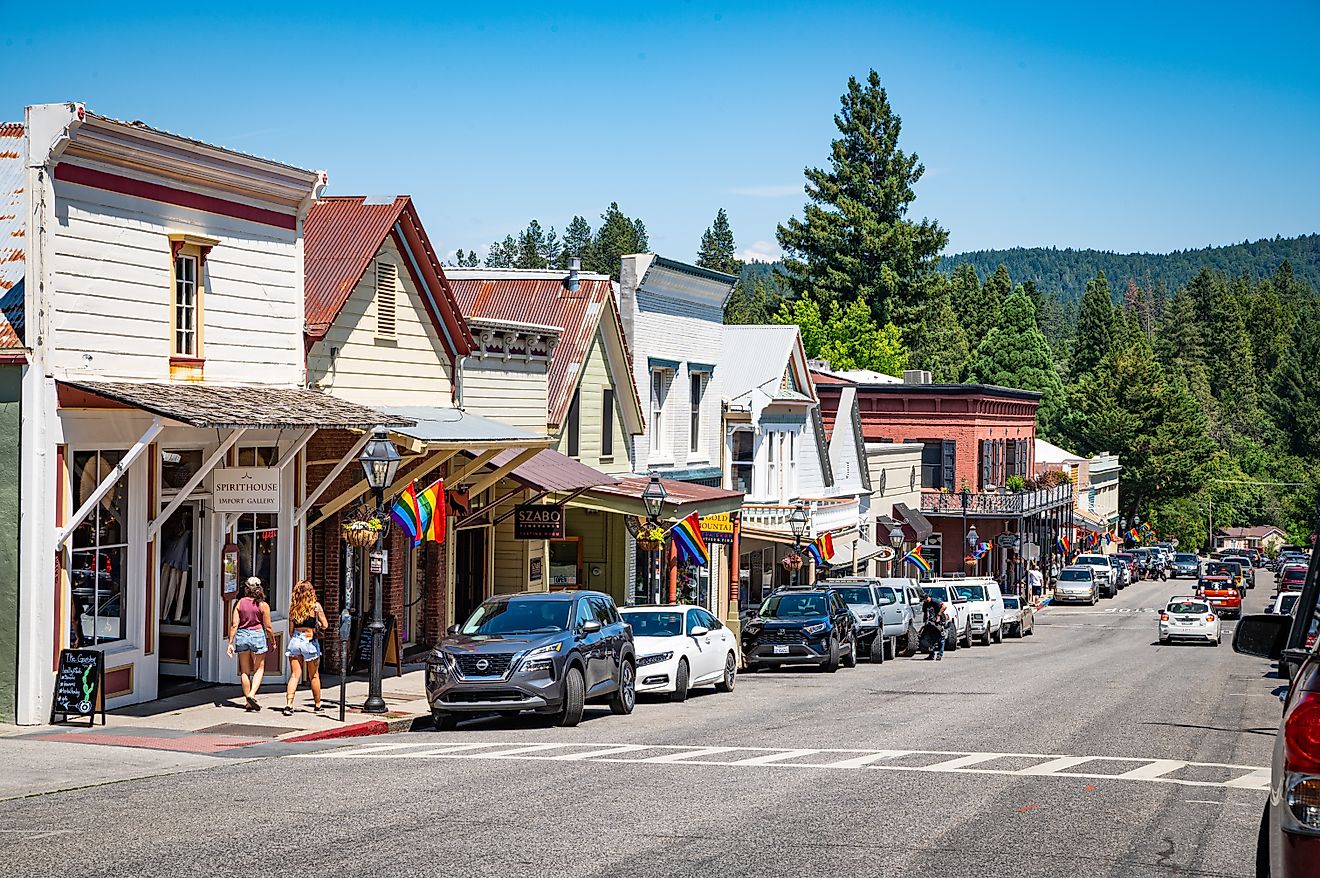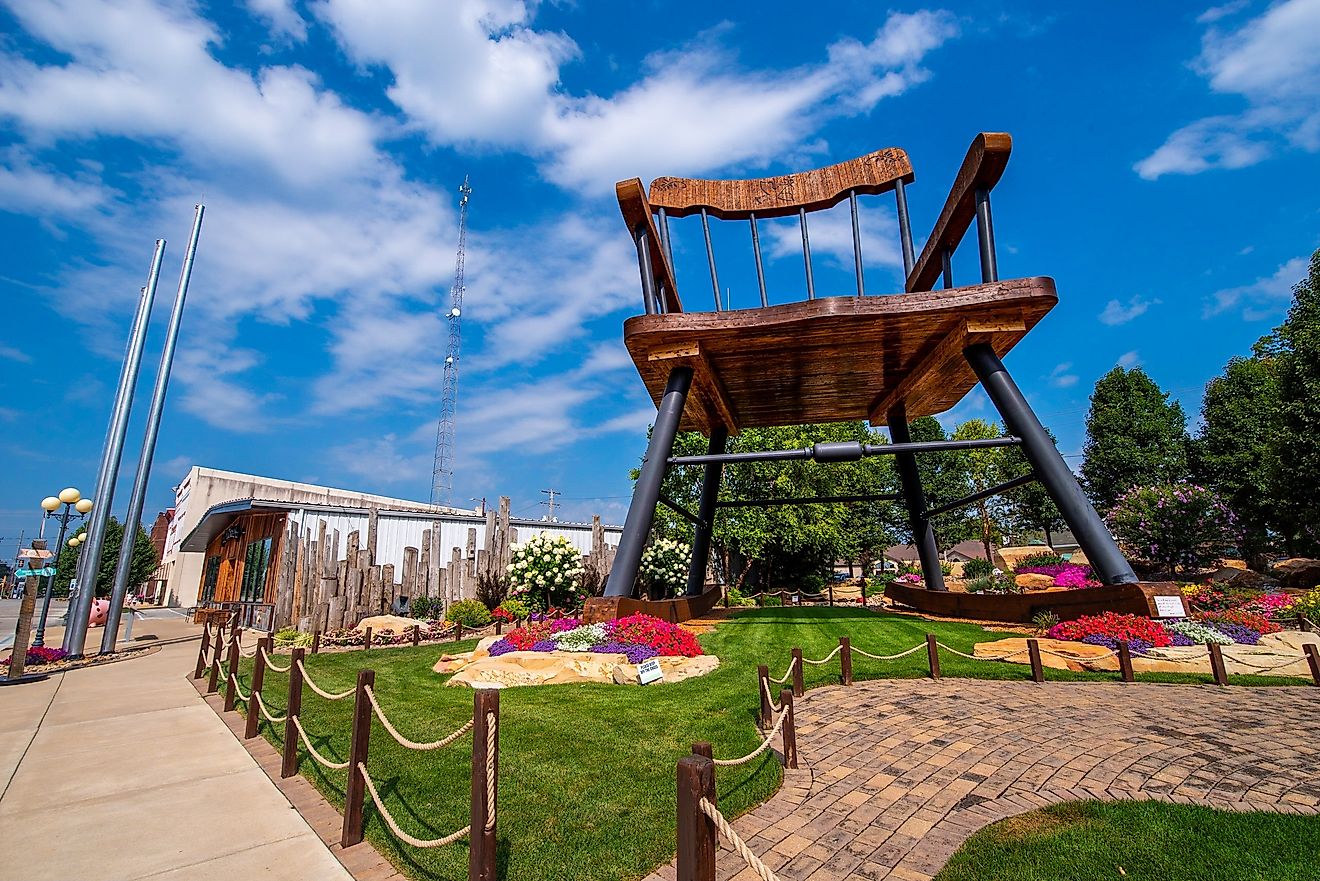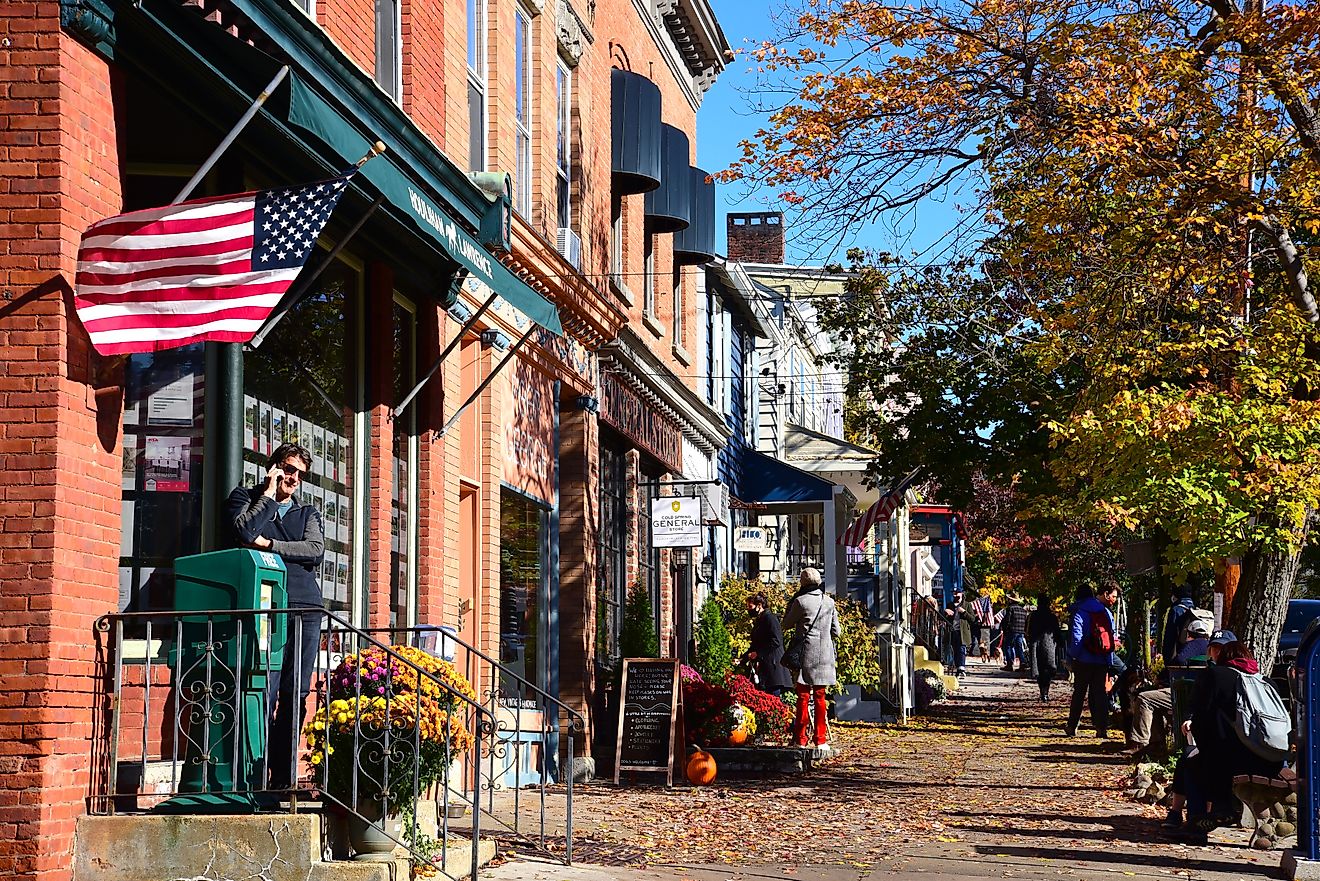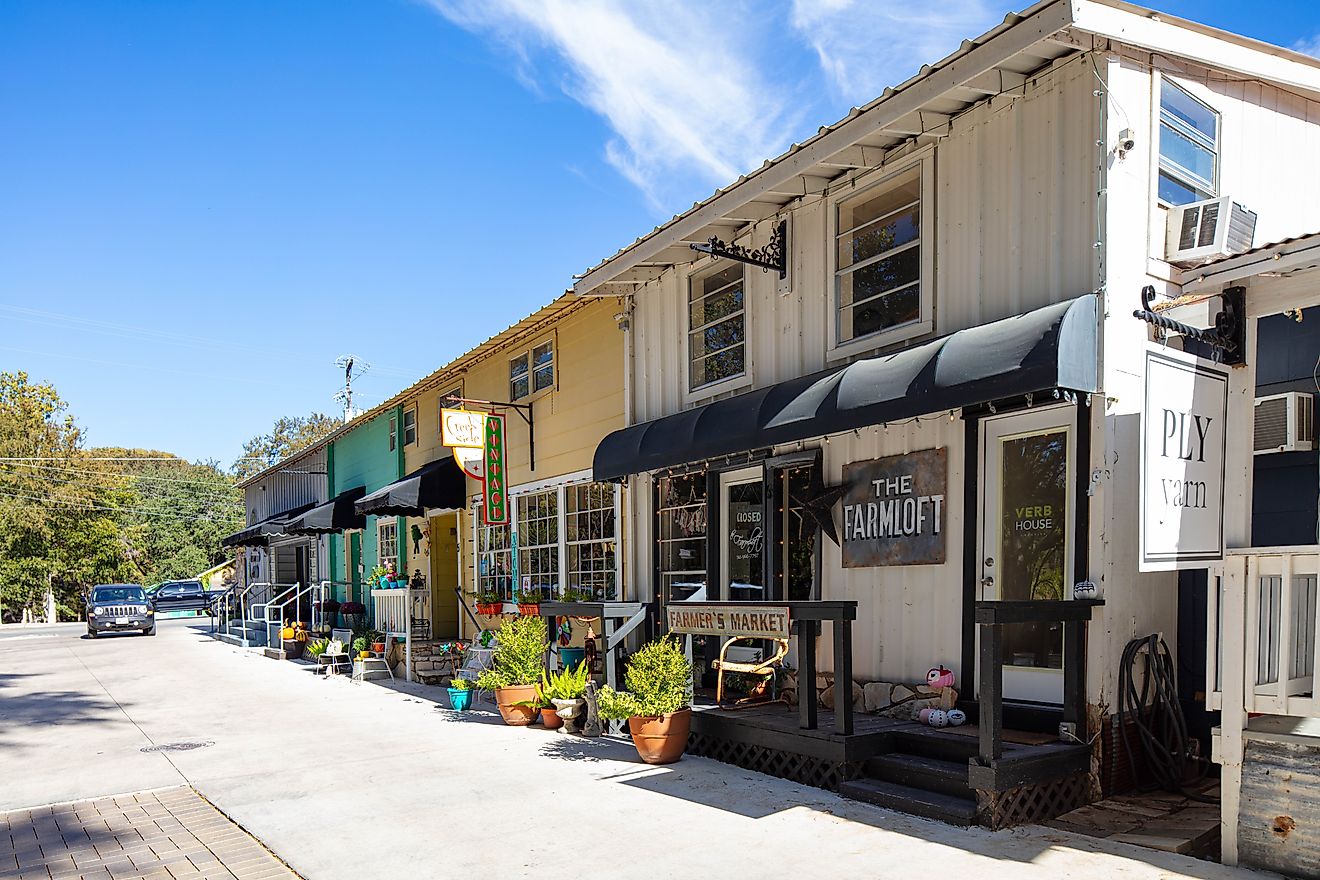
8 Best Places To Live In The Ozarks In 2025
With its impressive geography, much of the central-southern United States’ Ozark region is surrounded by beautiful nature. The broad plateau, stretching across northern Arkansas, southern Missouri, and parts of eastern Oklahoma, boasts the Ozark Mountains. From Table Rock Lake to the Lake of the Ozarks to smaller reservoirs tucked along the ridgelines, these bodies of water have enticed folks to call the region home. The valleys of these highlands hold towns molded by lumber routes, frontier trade, and postwar reinvention, offering plenty of employment. While log homes like the Pharr Cabin in Arkansas’ Bella Vista still preserve a lived past, present-day neighborhoods and amenities have long made the region an appealing place to settle. The best places to live in the Ozarks in 2025 offer more than postcard appeal. Their public services, stable housing, and local institutions support a lifestyle designed for long-term living.
Mountain Home, Arkansas
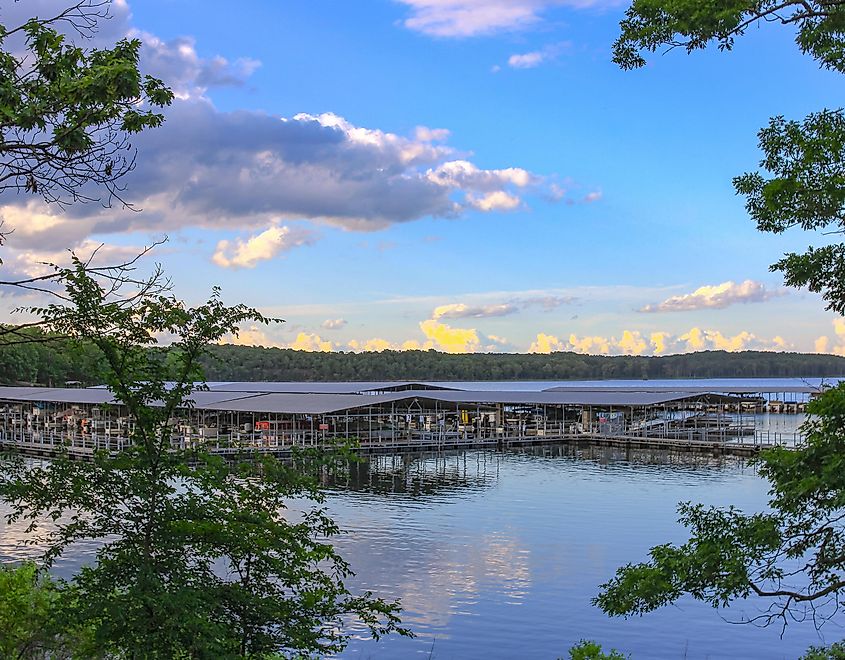
Mountain Home rests along the Ozark Plateau, near not one but two Ozark lakes, with Norfork not far and Bull Shoals just along the outer edge. The Arkansas State University campus fortifies this Baxter County seat's profile with reputable nursing, health sciences, and business programs, preparing in-state learners. Citizens here are used to paddling boats or luring bluegill, channel catfish, and largemouth bass as part of sports fishing. Residents can also explore the Baxter County Historical Museum, where aged photographs, letters, and faded ledgers recount lives once carved into these ridges. The Osage once moved through these hills before the pioneers followed. Simeon "Rapp" Talburt built the first home in the town nearly a couple of centuries ago, as the region got its original name, Rapp's Barren. This antique cabin remains at Cooper Park for people to admire.
In March 2025, homes sold at a median of nearly $200,000, a competitive figure compared to national rates. Healthcare, retail, and tourism jobs keep incomes steady, with Baxter Regional Medical Center, the primary healthcare center, and nearby Branson backing additional requirements. Older residents often swing clubs at Big Creek Country Club or unwind at Norfork Lake’s warm banks. Baxter Regional responds swiftly to emergencies, and public safety holds firm around College Street, where incident rates hover below state averages. Each summer, the annual Red White & Blue Festival draws thousands with fireworks, carnival rides, veterans’ tributes, and live performances by Arkansas musicians. It not only celebrates patriotism but also resounds with Mountain Home’s enduring sense of continuity.
Branson, Missouri
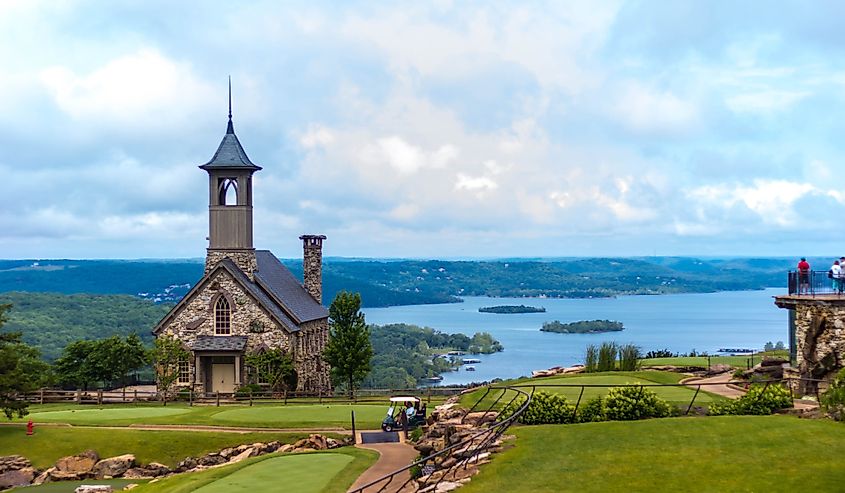
Branson buzzes with a lively hum, combining small-town warmth with the kick of constant music. Lying along the banks of the White River and the snake-infested Table Rock Lake, the streets here stay calm, with Highway 76 rarely snarling traffic, and commuters feel easygoing. The larger Branson Micropolitan Statistical Area has no shortage of amenities for locals and visitors alike. College of the Ozarks takes care of the young faces with its educational programs, sparking local pride. The healthcare system here contains a 165-bed hospital and emergency departments like Cox Regional Medical Center, while multi-specialty branches of the nonprofit Catholic organization Mercy Health System also serve the city.
Residents fill their days at Silver Dollar City, cheering roller coasters or craft demonstrations or trekking to their celebrated Ozark Lake for boating and quiet waterside moments. The Branson Centennial Museum offers a delightful walk down the city's memory lane, familiarizing visitors with its past. The ancestral Osage people inhabited the region for hundreds of years, hunting and trading with Europeans who arrived later. Currently, houses are listed at a median price of about $267,000 as of March 2025. It is a favorable price point relative to national trends. The job sector here incentivizes tourism and healthcare, while its proximity to Springfield’s manufacturing and retail industries brings more opportunities. Festivals like the National Harvest Festival, among excessive theaters and concerts, strengthen Branson’s reputation as the “Live Music Show Capital of the World.”
Bella Vista, Arkansas

Bella Vista was established as a summer resort over a century ago and soon emerged as one of Arkansas’ most cherished retirement villages. Inhabiting over 30,000 residents, this Benton County city stacks an impressive biking and hiking trail system, including the Back 40 and Little Sugar systems, which entice riders from across the country. The area also features seven man-made lakes used for fishing, kayaking, and boating, among them Loch Lomond, the largest in the town. Little Sugar Creek is a stream running through the region, whose damming led to the formation of Lake Bella Vista. Cold Cave Road and Lake Bella Vista Trail run along opposite sides of the pond to accentuate the large recreational park. Tanyard Creek Nature Trail is another worthy walk featuring a small yet scenic waterfall.
Local governance and volunteer boards within this residential township oversee strict zoning and maintenance standards, particularly around the amenities managed by the Property Owners Association (POA). Before adapting to modernized engineering, wood-frame structures ruled the city. The Pharr Cabin and the Lamberton Cabin have been preserved since the 1920s and are included in the National Register of Historic Places. The average home value in Bella Vista registered just above $300,000 at the end of February 2025, elevated but consistent with regional demand. Bella Vista consistently reports lower property and violent crime rates than the state average, with primary services provided by the Bella Vista Fire Department and its ambulance and paramedic service, Advanced Life Support.
Grove, Oklahoma
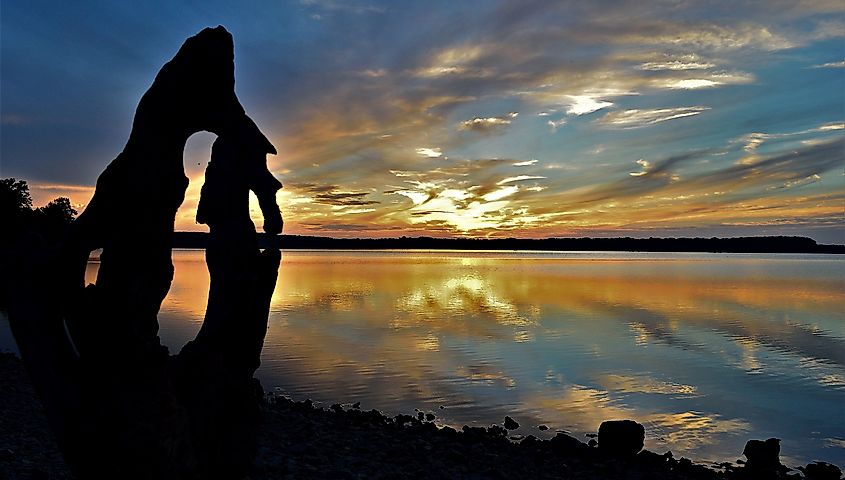
Set along the shore of Grand Lake O’ the Cherokees within the Neosho River, Grove’s reputation as a lakeside Oklahoma city is well on the rise. Events like the Pelican Festival commemorate seasonal migrations, while a bass fishing tournament marks the travel season that lasts from Memorial Day to Labor Day. Frequent concerts and public gatherings also liven the hilly terrain and fertile valleys surrounding the countryside. The median home sold price in Grove was slightly under $350,000 in March 2025, aligning with its rising profile on the U.S. map. Construction, health care, and retail are the primary supporters of employment in the region, while transport and its proximity to the Ozark Mountain Range have also been critical factors.
Local commerce in Grove is regularly energized by tourism around the lakefront, drawing visitors to boating, wakeboarding, and jet skiing. The G-Sports Club and Grand Lake Casino supplement the town’s active lifestyle options, while the botanical site of Lendonwood Gardens presents a more relaxed picture. Civic growth and cultural memory go hand in hand here, with Indigenous roots acknowledged not through symbols alone but through historical infrastructure and education. Historically part of the Cherokee Nation’s Delaware District, Grove carries a legacy built on Indigenous stewardship, with heritage sites like the Har-Ber Village Museum and the preserved Corey House/Hotel showing tangible records of this past.
Eureka Springs, Arkansas
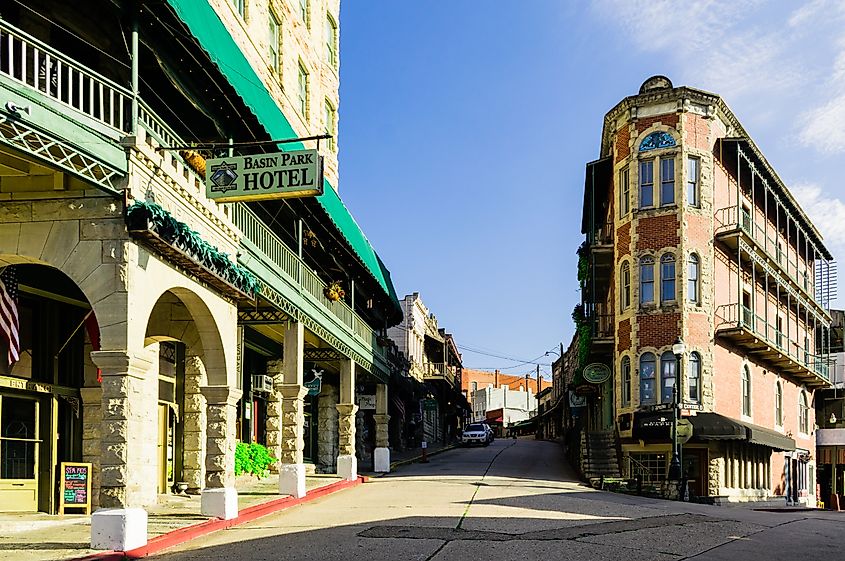
Once a Victorian spa town, the Eureka Springs Historic District is listed on the National Register of Historic Places for its preserved buildings and period details. Around one-fifth of the structures date back to the late 19th century’s wave of Victorian and Second Empire architecture. Bands of Delaware and Shawnee tribes migrated into the valley during the early modern period, with some settling in the region by the late 18th century. Public art and galleries line the hills, with colorful installations like the Rainbow Stairs standing out as a local favorite. Vintage charm defines the town, from its hillside homes to the locomotives of the Eureka Springs and North Arkansas Railway. The Crescent Hotel, a limestone giant from 1886, has earned a reputation as “America’s most haunted.” However, the city's image as a haunted town goes beyond history. The Eureka Springs Zombie Crawl launches Halloween festivities with a costumed parade, followed by the Nightmare in the Ozarks Film Festival.
Onyx Cave remains one of Eureka Springs’ supreme attractions, where slow drips of water formed flowstone deposits over thousands of years. Spring lakes and multiple groundwater pools, like Blue Spring, border the town on the west and north. Just outside city limits, Quigley’s Castle features tropical foliage, a stone garden, and antique collections built directly into its walls. Thorncrown Chapel, made almost entirely of wood and glass, reflects Biblical themes with sacred artifacts such as the Crown of Thorns. The town’s LGBTQ+ community is embraced through multiple Diversity Weekends and an annual Pride celebration. Home prices as of March 2025 averaged just above $300,000, notably lower than other cultural hubs within the American South.
Rolla, Missouri

One of the many eye-catching attractions in Rolla is the half-scale Stonehenge replica, sharing an uncanny resemblance to the prehistoric English monument. The site lies at the Missouri University of Science and Technology, a highly prestigious R1 engineering school. Missouri S&T is instrumental in refining young minds and complementing the city's character with brains. The Experimental Mine on campus is another example of this matchup, acting as a live simulation for underground blasting. Higher education projects, including those funded by the U.S. Department of Energy and Army Corps of Engineers, fuel the city's local economy.
Regional businesses like FCNB Bank and Brewer Science, as well as the French animal food manufacturer Royal Canin, supplement the job market and exports. When compared to most U.S. anchor communities, living in Rolla can be a steal. With the average home price at around $222,000 as of April 2025, the city is both affordable and hospitable. Though it lies inland, the Phelps County seat functions as a gateway not only to the aquatic shores of the Ozarks but also to the outdoor adventures of Little Prairie Conservation Area and Mark Twain National Forest. It also manages to avoid congestion for a small city with institutional prominence.
Harrison, Arkansas
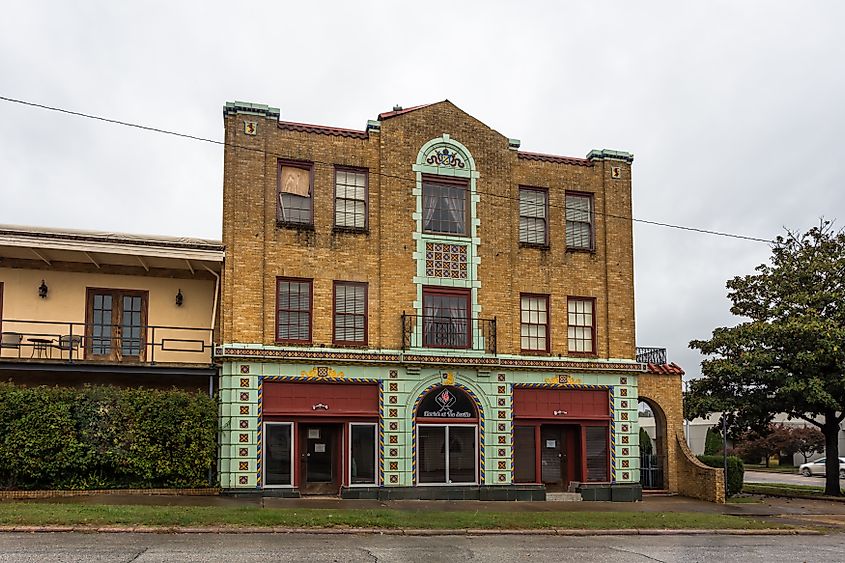
With Harrison as its headquarters, America's first national river, the Buffalo National River invites fans to try canoeing, fishing, and hiking adventures amid the gorgeous views of the Ozark Mountains. Now a highly urbanized region, Harrison witnessed Native American tribes, including the Shawnee, Quapaw, and Caddo, migrating through the caves and riverbanks, while Sioux and Cherokee ruled the land for the longest. The city now promotes diversity and community involvement with yearly events like the Arkansas Hot Air Balloon Championship. The Ozark Arts Council is another non-profit body that organizes performances and exhibitions of local culture and art. Parts of these efforts come to life in the Boone County Heritage Museum, which carries archival materials, photographs, and audio/video recordings. Alongside the history of the railroad in the region, a medical room, genealogy records, and a Civil War exhibit inform visitors about centuries of the past.
In order to upgrade the city downtown, Harrison Courthouse Square Historic District, and cultivate an intersection of commerce and culture, Harrison has taken on redevelopment initiatives. With the National Trust for Historic Preservation having recognized heritage, Hotel Seville, among other structures, completed renovation to regain its original appearance from 1929. North Arkansas Regional Medical Center is the primary healthcare provider, and not far from it lies Lake Harrison Park over at Crooked Creek, where citizens can relax and catch smallmouth bass. The median home sold price in Harrison was around $200K in March 2025, which is nearly 15% lower than the Arkansas average.
Sallisaw, Oklahoma
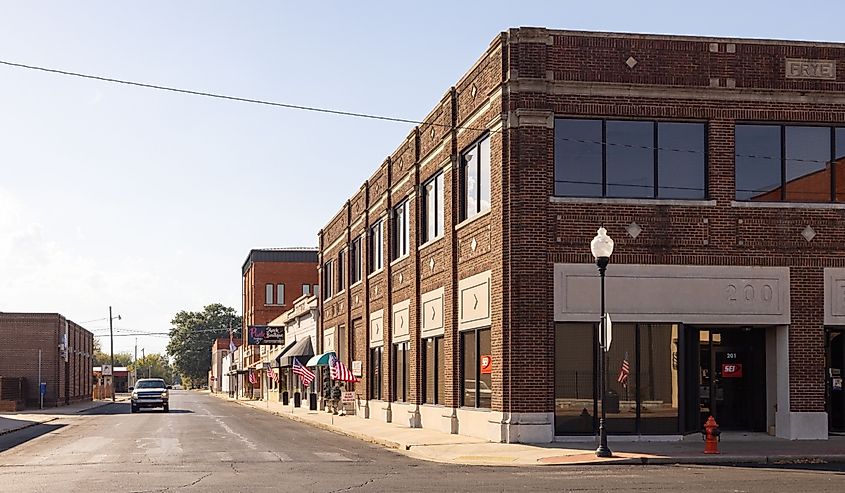
With its steady beats along the Ozark Plateau’s edge, Sallisaw and neighboring territories occupy the northern shores of the famous Robert S. Kerr Reservoir, a large lake in the Arkansas River. In addition to fishing at the reservoir, folks here prefer to spend free time exchanging stories of local ancestral tribes like the Cherokee, who dwelled here for centuries, hunting and trading with settlers in the early modern age. Exploring 14 Flags, as well as Sequoyah’s Cabin Museum, is a fun and informative aspect of living here, where Cherokee tales emerge through weathered tools and records. The medieval log house contains crucial relics related to the Native American polymath Sequoyah for all to ponder. Sequoyah Memorial Hospital is also named after the legendary figure who tackles medical emergencies swiftly.
Sallisaw is also a part of Fort Smith’s metropolitan area, which, in turn, boosts its connectivity. The factories nearby toss in more chances and raise the employment rate. Once a cotton-farming, lumber, and oil-productive venue, its current downtown is limited to East Cherokee Avenue. The median home sold price here is $146K, as recorded in February 2025, a bargain against national figures. Carl Albert State College is a local giant in sharpening young minds, with its campuses serving Sallisaw and nearby Poteau. Indian Capital Technology Center is a well-regarded vocational-technical school with multiple branches in Oklahoma and one in the city. With short and less severe winters, retirees settle in with ease, supported by retirement plan services at the National Bank of Sallisaw and senior living options like Carrington Village Retirement Home. Gatherings like the Diamond Daze Festival are packed with music and food to bring the townsfolk together, aiming for a calm, connected existence.
Nature and Tradition Meet in the Ozarks
The Ozarks’ strongest appeal in 2025 lies in how effortlessly its towns balance livability, affordability, and seasonal comfort. Without the climate extremes that drive many to relocate, the region provides relief from the biting winters of the northern United States and the sticky, hurricane-laden humidity of the Gulf states. As with tourists, recreation remains central to the local population, with dozens of lakes such as Table Rock, Norfork, and Loch Lomond providing a peaceful break. For water sports enthusiasts, routines built around fishing, kayaking, and boat outings also remain accessible without the inflated costs found near major coastal areas. Community ties are a firm attraction that holds even the largest neighborhoods together. The social calendar reflects this through history and shared traditions such as the flamboyant Hot Air Balloon festivals and the ghoulish Zombie Crawls, where participation tends to be neighborly, not performative. Life in the Ozarks, ultimately, means being part of a place that is livable, welcoming, and content.
